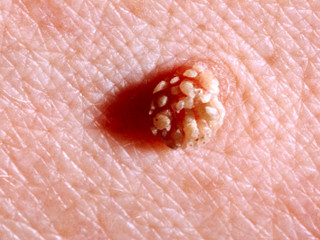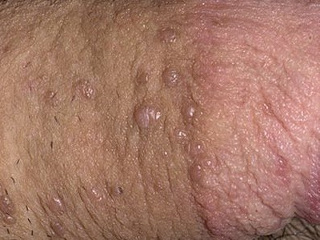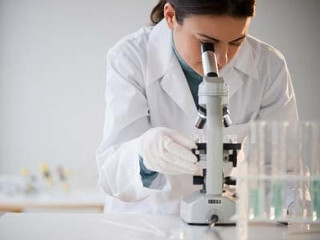Human papillomavirus (HPV) manifests itself in the body with various complaints, depending on the type and location. It can be in a latent state for a long time without causing any disease, and then for no apparent reason it appears in the form of various growths on the skin or mucous membranes.
Papillomas on the penis: causes of occurrence

Papillomas, condylomas or warts may be harmless, but their danger lies in the fact that altered epithelial cells can degenerate into cancer cells. Therefore, if papillomas have appeared on the penis, then you should immediately consult a doctor in order to diagnose the disease and treat it in a timely manner.
What is it?
HPV is a large group of DNA-containing intracellular pathogenic microorganisms that are divided into 27 species, five families, and more than a hundred strains.
They also differ in terms of the risk of malignancy (oncogenic properties). According to statistics, these viruses affect more than ninety percent of adults. Papilloma viruses exist and develop only in the human body. They are more commonly transmitted through sex than other viruses. HPVs are not enveloped, but they have exceptional vitality and can be present in the external environment for some time. Pathogenic microorganisms are localized in the base layer of the skin or mucous membranes.
Papillomas on the penis are often caused by a group of viruses that can quickly provoke the malignancy process. In this regard, they are often referred to as precancerous conditions or the first step in the development of oncology. In this case, doctors can prescribe the drug Helixor to the patient.
What are?
Genital papilloma is a small neoplasm. The outgrowths resemble cauliflower, mushrooms or cockscombs in appearance. In the photo you can see what the pathological growth of the epithelium looks like. They are more common on the foreskin, frenulum, and glans, and less often on the genital trunk or scrotum.
- On the foreskin, you will see genital warts that are light-colored and have a thin stem. Individual elements are found at first, but as the disease develops they grow and become similar to cauliflower.
- If papillomas have appeared on the penis in the area of the frenum, they can be seen as small white pimples that are in several rows.
- There are pale pink villi on the head of the penis. They represent multiple growths as well as on the foreskin.
- A disease of the genital trunk, scrotum or groin caused by HPV is a giant condyloma by Buschke-Levinstein. It is classified as precancer because the changed cells grow rapidly.
Reasons for appearing
Viral pathogens that cause papillomas on the penis penetrate the epithelium through microcracks in the skin or mucous membranes. The main route is through sexual contact of any kind. You can also become infected with the papilloma virus in the household if you use personal hygiene items, e. g. B. Towels from a person infected with HPV. The risk of contracting the virus is high in public places such as baths, swimming pools, and showers. The pathogen does not show up immediately.
The latency period can last from several months to a year. If a man is healthy and has high levels of immune defense, the disease may not occur and the person simply becomes the carrier of the virus. The impetus for the reproduction of the papillomavirus and the appearance of papillomas on the penis is a decrease in immunity.
Thus there are two reasons for the formation of growth on the genital organ:
- papillomavirus infection;
- HPV activation due to a weakened immunity.
Triggering factors:
- frequent change of sexual partner;
- insufficient contraception during sex;
- chronic diseases in the urogenital area;
- hormonal disorders;
- AIDS or HIV infection;
- frequent hypothermia;
- viral infections, persistent colds;
- long-term poisoning of the body (receptionantibiotics, alcohol consumption, smoking, etc. );
- Stress, an unhealthy diet and similar factors that negatively affect the immune system.
Papillomas on the glans: symptoms and diagnosis
HPV masses on the penis are usually not symptomatic. Men often do not even notice the activity of the papillomavirus. Papillomas on the head of the penis may show up, manifested by itching or burning sensation during intercourse.

If pathological formations have grown and become noticeable, this can lead to discomfort in a man due to the non-aesthetic appearance of the penis. Papillomas on the head of the penis can cause phimosis, which is accompanied by corresponding symptoms. With oncogenic formations, when the growths reach large sizes, men may complain of pain in the affected area and a foul odor.
Diagnosis
If a man sees suspicious formations on his penis, it is best to put off false shame and seek medical help. Diagnostic measures to identify papillomas on the head of the penis are carried out by a urologist. He carefully collects anamnesis - questioning and examining the patient.
In addition to the penis, the doctor examines the scrotum, groin and anal area, that is, the places where the virus can be localized. When the urologist detects papillomas on the head of a man's penis, he prepares him for tests to determine the type of virus. If the frenulum is affected, a meatoscopy may be needed, which is done to identify foci of HPV lesions in the urethra.
Men take a swab from the urethra for cytological examination, which determines the type of virus. The polymerase chain reaction method can identify the presence and type of virus with a probability of up to ninety-five percent. Any liquid - blood or the contents of the urethra - is suitable as a test medium.
Condylomas on the penis: the risk of pathology
Once the disease is diagnosed, the doctor will prescribe the appropriate treatment. Do not self-medicate as it may not be effective and dangerous. If the disease is left untreated, non-aesthetic warts on the penis can cause more serious problems.
Why are papillomas on the penis dangerous?

- In the first stage of papilloma development, phimosis can occur, which is characterized by the fusion of the foreskin with the head of the penis. If this condition is left untreated, the following complication occurs, which is caused by the accumulation of smegma in the space between the head and foreskin.
- Inflammation of the head and body of the penis due to the invasion of pathogenic bacteria under the inner leaves of the foreskin.
- The appearance of erosive defects on the head and foreskin, the degeneration of altered epithelial cells into cancerous ones.
Why are they dangerous to a woman?
A man with papillomas on the genitals becomes a source of infection for a woman. As a rule, when the papillomavirus has entered a woman's genitals, its activity is very difficult to notice in the early stages of the disease. Oncogenic types of viruses are particularly dangerous because they cause cervical cancer. If a woman does not undergo a preventive examination, then oncology is detected even in the late stages of cancer development.
How is cancer reborn?
At the beginning of the papilloma development, individual benign neoplasms are visible. Then they increase in number and combine with each other, creating a single conglomerate. If left untreated, the changed cells can degenerate into malignant cells over time. The risk of degeneration of education into cancer increases tenfold if the type of virus is oncogenic.
Therefore, it is very important to make a diagnosis of the disease in a medical facility. The most common oncogenic HPV that cause genital warts are the sixteenth or eighteenth types. They cause cancer of the penis, cervix, and bladder.
How to remove papillomas on the penis: treatment and prevention
Since the appearance of pathological growths on the genitals is preceded by a decrease in immunity, treatment should be complex. The growths themselves are removed by surgery or cauterization. Medicines that contain a component that blocks the development and reproduction of viruses, e. g. Medicines such as Viferon, Acyclovir, Epigen-intim and similar drugs help fight viruses.
In addition to antiviral therapy with drugs, the doctor prescribes immunomodulators, vitamin complexes and gives recommendations for a healthy diet and lifestyle. It is important to identify and eliminate all of the factors that led to the activation of the virus. Therefore, before deciding how to remove papillomas on the penis, you should undergo a thorough health examination.
Delete
Genital growth doesn't go away on its own, so radical treatments are required to get rid of them. There are several methods that can be used to remove uncomfortable growths.
- Laser removal. Papillomas are melted by a laser beam and a crust remains in place, which naturally disappears after two weeks.
- Cryodestruction. Neoplasms are cauterized with liquid nitrogen. As in the first case, a crust remains, which disappears without a trace after a while.
- Radiosurgery. The papilloma is affected by radio waves. The method is considered to be the most accurate, safest and does not cause complications.
- Electrocoagulation. The growth is eliminated by an electric current applied at a certain frequency. This method of removal can cause tissue scarring complications.
- Chemical disposal. The method consists in the cautery of papillomas with medicinal solutions: condolin or solkoderm. The drugs are used by healthcare professionals. After treatment, neoplasms dry up and go away.
- Treatment with ointments. If the growths are small, you can remove them with an ointment. Oxolinic ointment or Aldara medication will help cope with the papillomavirus.
How papillomas on the penis can be eliminated by cryodestruction or with the help of medication is decided by the doctor taking into account the individual characteristics of the patient. The procedures for eliminating neoplasia do not require anesthesia and give a positive result in ninety-five percent of cases. Sometimes relapses occur in the same place.
Unconventional methods
The answer to the question of how to get rid of papillomas on the penis can be found in the recipes of traditional medicine. It should be noted that the use of such methods must necessarily be agreed with the attending physician. Otherwise, treatment may be in vain, time is lost, and this leads to complications.
Popular folk recipes:
- Tea tree oil, rubbed into the affected area daily, will help remove the buildup until the wart disappears.
- Good treatment results can be achieved if propolis is applied to the papilloma.
- The easiest way is to smear the neoplasms with egg white.
- Vinegar helps get rid of papillomas, which need to be carefully cauterized against growth once a day.
- You can remove small formations with the help of mountain ash and berry juice (lubricant).
- Be careful when making ammonia lotions as this thin skin can burn.
These recipes will help get rid of newly emerged neoplasms that haven't had time to grow. If the papilloma has already formed and protrudes significantly above the skin, it must be radically removed.
Prevention
The surest way to rule out an unpleasant and dangerous illness is protected sex and personal hygiene. If these conditions are violated, preventive measures should be taken to maintain a sufficient level of immunity so that the virus does not show activity in the body.
You can have a positive effect on immunity if you cure chronic diseases, eat right, play sports, develop temperaments and treat infectious diseases in good time. It is important to give up bad habits that lead to poisoning of the body. In order for papillomas not to lead to complications, men need to visit a urologist regularly to identify the first signs of the disease.













































































